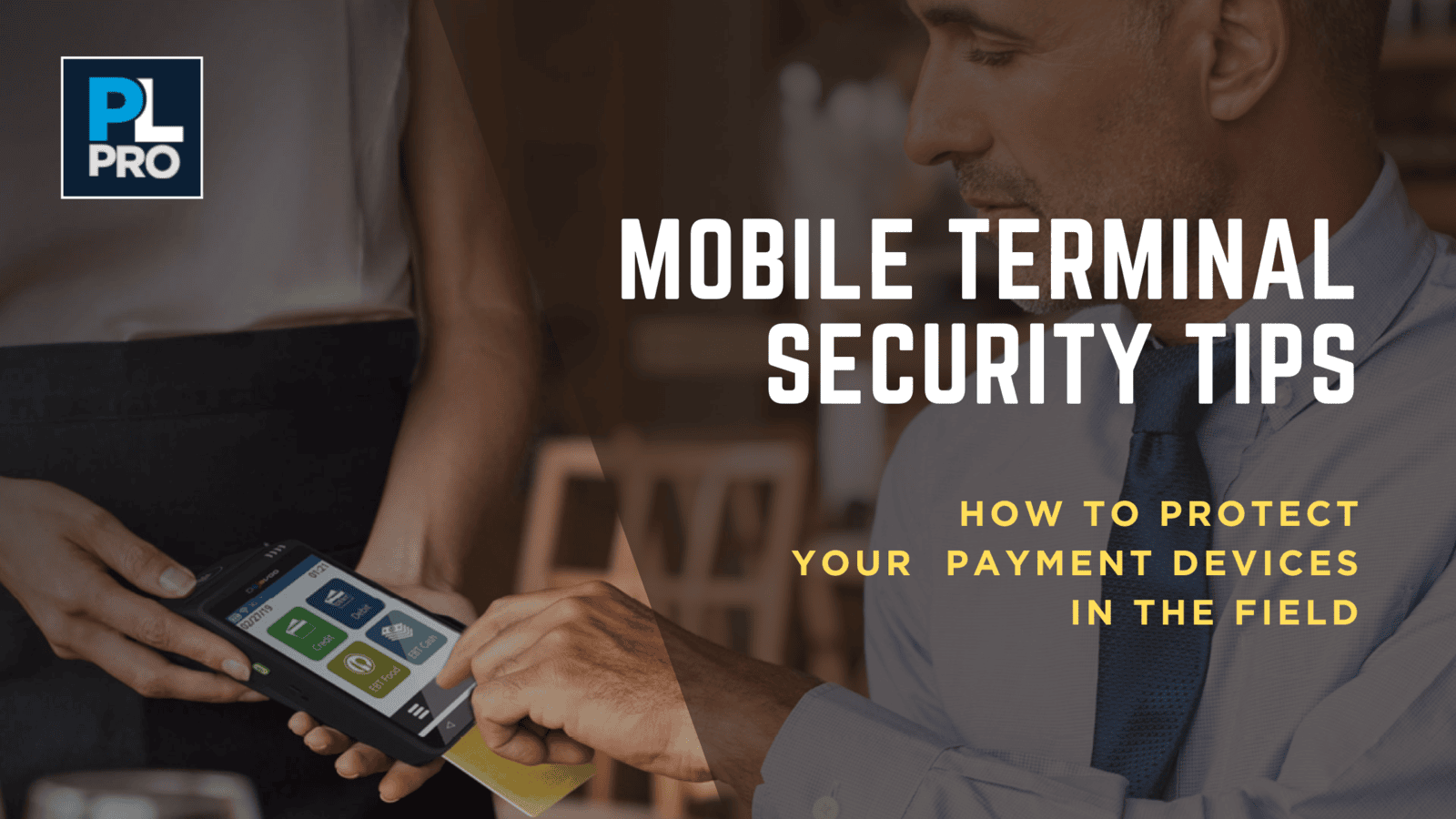
Mobile payment terminals have made it easier than ever to take payments anywhere—whether you're at a trade show, a veterinary farm call, or running curbside pickup at a retail location. But when you're processing sensitive card data on the go, security can't be an afterthought.
At PayLow Pro, we believe security should be simple and proactive. Whether you're a technician supporting a merchant or a business owner using your mobile terminal daily, here are the top security practices to keep your mobile payment equipment safe and compliant.
1. Keep Firmware Updated
Your terminal’s firmware is its operating system—and just like your smartphone, it needs updates to patch vulnerabilities and improve performance.
Tips:
Schedule regular firmware checks—set a calendar reminder monthly.
Only update firmware from official sources (your equipment provider or manufacturer).
Avoid delaying updates—most patches are designed to fix known threats.
If you’re unsure how to update, our support team can walk you through the process or push updates remotely where possible.
2. Verify Encryption Is Active
All PayLow Pro terminals support point-to-point encryption (P2PE), which protects cardholder data from swipe to settlement. But it’s still smart to verify your device is functioning securely.
Checklist:
Confirm your device encrypts at the reader—not later in the software flow.
Use terminals pre-configured with PayLow Pro’s encryption keys (do not self-install gateways or third-party apps).
Test a transaction and verify receipt masking is working (e.g., only last 4 digits of card shown).
3. Use Secure Wi-Fi Connections (Or Cellular)
Wi-Fi is convenient, but public or unsecured networks pose a huge risk for man-in-the-middle attacks or unauthorized snooping.
Best Practices:
Avoid public Wi-Fi (coffee shops, convention centers) unless you’re using a VPN.
Always require a strong password on your personal or hotspot network.
Disable Wi-Fi when using cellular-connected terminals like the Valor RCKT or Dejavoo QD2.
4. Enable Terminal Locks & Admin Permissions
If your terminal is lost or stolen, built-in access controls can prevent unauthorized use.
What to Do:
Set a secure passcode or PIN lock on your terminal or app.
Restrict access to administrative settings—only trusted staff should change pricing or refund options.
Log out of apps like SwipeSimple or iPOSPay when the terminal is not in use.
5. Watch for Physical Tampering
Especially in rural or mobile environments, unattended equipment can become a target for tampering.
Stay Vigilant:
Inspect your device daily—look for loose parts, unfamiliar ports, or stickers that weren’t placed by you.
Store terminals in a locked case when not in use.
Consider tamper-evident seals or a tracking device for high-value equipment.
6. Train Your Staff on Secure Use
The best security system fails if people don’t know how to use it.
Security Training Tips:
Teach staff to verify encryption status before accepting a payment.
Review how to connect securely to networks.
Role-play how to handle suspicious activity or customer pushback on dual pricing.
Your mobile terminal is a powerful tool - but it's also a responsibility.
Taking five minutes a week to check security settings, update firmware, and review connection practices could save your business from a serious breach or compliance issue.
PayLow Pro’s mobile terminals—including the SwipeSimple B250, Valor RCKT, and Clover Flex—are all designed with security in mind. But a little knowledge goes a long way.
Need help reviewing your mobile setup? Contact our support team or talk to your PayLow Pro rep for a free device security checkup.
Get the Guide
- The hidden fees your practice incurs for card payments
- The differences between traditional processing, cash discounts, surcharging, and dual pricing
- The legalities for federal government, state legislation and card brand regulations
- The correct setup process and implementation of a legal dual price processing program.






